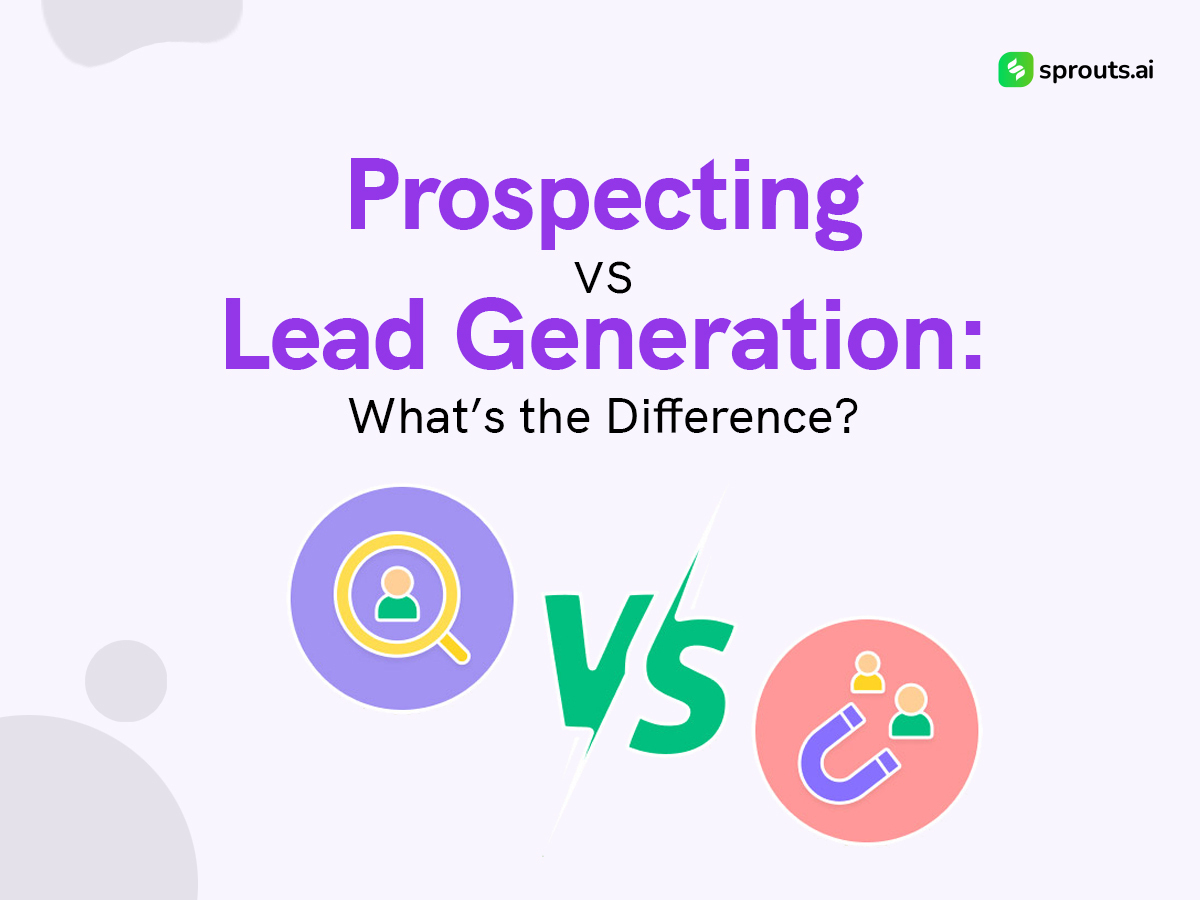Have you ever wondered if prospecting and lead generation are basically the same thing in sales? They might seem alike initially, but you know they’re distinct if you work in sales or marketing. Let’s break down the differences between prospecting and lead generation, highlighting their unique roles in attracting and engaging customers.
Prospecting: A Strategic Journey into the Unknown
Prospecting involves identifying and qualifying potential customers who are genuinely interested in your product or service. The process requires a keen understanding of your target audience, their pain points, and how your offering can provide a solution. One key aspect of prospecting is the proactive approach it demands. Unlike lead generation, which often relies on inbound marketing efforts, prospecting involves outbound activities. This might include cold calling, email outreach, or event networking. The goal is to initiate conversations with potential customers and lay the groundwork for a meaningful relationship.
The Pros of Prospecting
- Personalization: Prospecting allows for a highly personalized approach. By understanding each prospect’s specific needs and challenges, sales professionals can tailor their communication to resonate with the individual, increasing the likelihood of engagement.
- Targeted Outreach: You can zero in on your ideal customer profile with prospecting. This targeted approach ensures that your efforts are focused on individuals or businesses most likely to benefit from your offering, saving time and resources.
- Real-time Feedback: Direct interactions during prospecting provide immediate feedback. This real-time engagement allows sales professionals to adapt their approach, addressing concerns or objections and building rapport with potential customers.
Lead Generation: Casting a Wide Net
Lead generation is more about casting a wide net and drawing in potential customers through various channels. It involves creating awareness and interest in your brand, ultimately enticing individuals to express interest in your product or service. This interest is manifested through actions like filling out a contact form, subscribing to a newsletter, or downloading a whitepaper.
The Pros of Lead Generation
- Scalability: Lead generation efforts can be scaled more easily than prospecting. Through content marketing, social media, and other online strategies, businesses can reach a broader audience, generating more leads.
- Automation: Automation plays a significant role in lead generation. Email campaigns, social media posts, and other online activities can be automated to reach a larger audience without requiring constant manual intervention.
- Brand Visibility: Lead generation contributes significantly to brand visibility. By creating a solid online presence and offering valuable content, businesses can position themselves as industry experts, attracting potential customers actively seeking solutions.
The Symbiotic Relationship
While prospecting and lead generation have distinctive features, they are not mutually exclusive. The most successful sales and marketing strategies often involve a harmonious blend of both approaches. Consider a scenario where a lead generated through an inbound marketing campaign expresses interest in your product. The subsequent prospecting efforts involve personal outreach to understand the lead’s specific needs and guide them through the sales funnel. The symbiotic relationship between prospecting and lead generation is the key to a robust customer acquisition strategy. By integrating these approaches seamlessly, businesses can create a comprehensive system that addresses the diverse needs of their target audience.
Navigating the Sales Funnel
Understanding how prospecting and lead generation contribute to different sales funnel stages is crucial for optimizing their impact. Lead generation predominantly focuses on the top of the funnel, creating awareness and attracting a broad audience. As leads move through the funnel, prospecting takes center stage, nurturing relationships and converting interested parties into loyal customers.
- Top of the Funnel (TOFU): Lead generation activities, such as content marketing, social media campaigns, and online advertising, are instrumental in filling the top of the funnel with a diverse pool of potential leads.
- Middle of the Funnel (MOFU): Prospecting becomes essential as leads progress through the funnel. This is the phase where personalized communication, follow-up calls, and targeted outreach play a pivotal role in understanding the prospect’s needs and providing relevant information.
- Bottom of the Funnel (BOFU): At the bottom of the funnel, prospects are primed for conversion. A seamless transition from lead generation to prospecting ensures that the sales team can close the deal by addressing any remaining concerns and providing the necessary support.
Striking the Right Balance
Achieving success in customer acquisition requires striking the right balance between prospecting and lead generation. A holistic approach involves aligning marketing and sales teams, leveraging data-driven insights, and employing modern technologies.
- Data-Driven Insights: Utilize data analytics to gain insights into customer behavior, preferences, and engagement patterns. This information can inform lead generation and prospecting strategies, ensuring a more targeted and effective approach.
- Sales and Marketing Alignment: Foster collaboration between sales and marketing teams. A seamless handoff of leads from marketing to sales ensures that the transition between lead generation and prospecting is smooth and well-coordinated.
- Technology Integration: Leverage automation tools and customer relationship management (CRM) systems to streamline processes. Automation can handle repetitive tasks, allowing sales professionals to focus on building relationships and closing deals.
Businesses that recognize the symbiotic relationship between these two approaches and adapt their strategies accordingly are poised for success.
As you work through the complex world of getting customers, think about how finding potential clients and creating interest have their strong points. Try to approach it all in a well-rounded way, blending the broad reach of lead generation with the personal touch of prospecting. Doing this will help you get more customers for your business.

